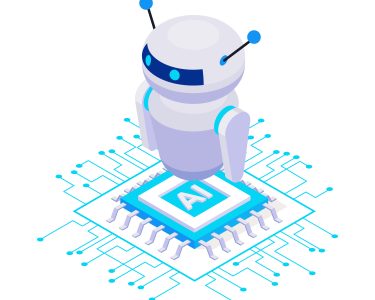In today’s digital age, data is gold. Whether it’s your personal information or business intelligence, protecting your data should be a top priority. Unfortunately, cyber threats are becoming more sophisticated and frequent, making it necessary to be proactive in securing your data. In this blog post, we’ll explore seven ways you can safeguard your sensitive information and keep hackers at bay. From using strong passwords to implementing encryption technology, these tips will help you stay one step ahead of cybercriminals and protect what matters most – your data!
Passwords
It’s no secret that passwords are the first line of defense when it comes to securing your data. That’s why it’s important to choose strong, unique passwords for all of your online accounts. Here are a few tips for creating strong passwords:
– Use a mix of upper and lowercase letters, numbers, and special characters.
– Avoid using easily guessed words like “password” or your name.
– Make your password at least 8 characters long.
– Use a password manager to keep track of your passwords and generate new ones.
By following these tips, you can create strong passwords that will help keep your data safe from hackers and other online threats.
Encryption
In order to protect your data, you should encrypt it. Encryption is a process of transforming readable data into an unreadable format. This can be done using a variety of methods, including software, hardware, or a combination of both.
There are many benefits to encryption, including the prevention of data breaches, deterring cyber-attacks, and protecting the privacy of individuals. Additionally, encrypted data is often more difficult for adversaries to access and use for their own purposes.
There are several ways to encrypt data. One common method is to use a password or key to encrypt data. This password or key can be stored on a separate device, such as a USB drive, or it can be memorized by the user. Another method is to use public key infrastructure (PKI), which uses two keys–a public key and a private key–to encrypt and decrypt data. PKI is often used in conjunction with other security measures, such as firewalls and intrusion detection systems.
No matter what method you choose to encrypt your data, it is important to have a backup plan in place in case your primary method fails. You should also regularly update your encryption software and keys to ensure that your data remains secure.
Two-Factor Authentication
Two-factor authentication is a process that requires two types of identification from users before granting access to sensitive data or systems. The first factor is typically something the user knows, such as a password, while the second factor is usually something the user has, such as a hardware token or biometric data.
When used together, these two factors can provide a much higher level of security than either one alone. Two-factor authentication is an important tool for protecting data and preventing unauthorized access to systems, and it’s becoming increasingly common in both business and consumer applications.
Data Backups
Data backups are important for any business or individual who wants to ensure their data is safe and secure. There are a number of ways to backup data, including using an external hard drive, cloud storage, or backing up to a physical tape.
External hard drives are popular because they are relatively inexpensive and easy to use. Cloud storage is also becoming increasingly popular, as it offers off-site backups and is often more affordable than traditional methods.
Backing up data to a physical tape can be more time-consuming, but it can be useful for businesses with large amounts of data. Tapes can also be stored off-site for added security.
No matter which method you choose, it is important to create regular backups and store them in a safe place. This will help you to recover your data if it is ever lost or corrupted.
Firewalls
1. Firewalls are one of the most important ways to secure your data. They act as a barrier between your network and the outside world, and can help to prevent unauthorized access to your data. There are a variety of different types of firewalls available, and it is important to choose the right one for your needs.
2. Firewalls can be either hardware- or software-based. Hardware-based firewalls are typically more expensive, but offer a higher level of security. Software-based firewalls are less expensive, but may not provide as much protection.
3. Firewalls can be either single- or multi-layered. Single-layered firewalls provide basic protection, while multi-layered firewalls offer more comprehensive protection by including features such as intrusion detection and prevention.
4. When choosing a firewall, it is important to consider its features, performance, price, and compatibility with your existing network infrastructure.
Security Software
There are many different types of security software available to protect your data, and it is important to choose the right one for your needs. Some common security software options include anti-virus and anti-malware programs, firewalls, and encryption programs.
Anti-virus and anti-malware programs are designed to protect your computer from viruses and other malicious software. These programs can be installed on your computer or run from a CD or USB drive.
Firewalls help to prevent unauthorized access to your computer by blocking certain types of traffic. You can configure a firewall to allow only certain types of traffic, or you can use a pre-configured firewall program.
Encryption programs encrypt your data so that it cannot be read by anyone who does not have the proper decryption key. This is an important step in protecting your data if it is stored on a portable device such as a laptop or USB drive.
Physical Security
Physical security is the protection of your computer hardware, including the server, workstations, and data storage devices. It includes both on-site and off-site measures to deter unauthorized access, use, or destruction of your computer equipment and data.
On-site physical security measures include securing your facility with locks, alarms, and video surveillance; controlling access to your computer equipment with user IDs and passwords; and physically separating your computer equipment from unauthorized users. You can also use security technologies such as encryption and tokenization to protect your data while it is stored on physical devices.
Off-site physical security measures include storing backups of your data in a secure location away from your primary facility; using encrypted communication channels when transmitting sensitive data; and disposing of physical storage devices properly to prevent data breaches.




